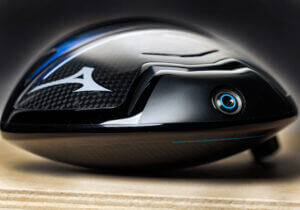Even within the relatively small confines of the golf equipment world, “Max” means different things to different brands—that’s especially true in the era of 10K driver designs where the new standard is Max and then some.
Within that context, the Mizuno ST-MAX 230 driver isn’t as max-y as some others we’ve discussed this season. That’s by design and we’ll get to the reasons in a bit.
First, it’s always worth explaining when a new product (in this case, the Mizuno ST-MAX 230 driver) doesn’t directly replace another.
Like the ST-G released last fall, the ST-MAX 230 is a line extension. Mizuno’s other 230 models (X and Z) are still current and aren’t being phased out anytime soon.
As you may recall, Mizuno has shifted to longer lifecycles across all its product lines. By staggering the release (as they’ve done with ST-G and ST-MAX 230), they’re able to offer something new on a regular basis while still offering golfers more significant improvements by way of the longer development cycle.
About the Mizuno ST-MAX 230 Driver

All of that being said, the Mizuno ST-MAX 230 is something entirely different from Mizuno so in that respect it can be thought of as the first dot on a new timeline.
With the ST-MAX 230 driver, Mizuno wanted to push MOI but still have the driver be what Mizuno’s Chris Voshall describes as “Tour ready.”
As we’ve discussed, pushing MOI closer to functional limits isn’t without tradeoffs. It requires a massive footprint which, depending on your perspective, might be seen as anything from really big to really goofy looking.
At real equivalent lofts, higher spin is basically unavoidable and, as we’ve touched on, the bigger bodies present acoustic challenges.
You can bet engineers work to mitigate those issues to the extent possible but, to an extent, they’re unavoidable.

The idea behind being Tour-ready is a design that packs well above-average forgiveness, while keeping all the other things in check, such that a Tour player might just put a Mizuno ST-MAX 230 in play without modification.
Those last two words are key.
It’s early in this whole 10K cycle and, while there has been some 10K play at the highest level of the game, it’s fair to wonder how much modification (lighter back weights, hot melt, etc.) goes into making those Tour-ready.
For its part, Mizuno puts the MOI of the ST-MAX 230 Driver in the low 9,000s. Nothing the company is willing to round up to 10K but plenty forgiving, nonetheless.
Mizuno ST-MAX 230 Design

The Mizuno ST is designed close to the USGA’s maximum allowable footprint. The larger body provided an opportunity to leverage more composite material in the crown and sole.
You know where this is headed.
Those weight savings mean more discretionary mass to play with and, given the “Max” designation, you can bet the bulk of it was allocated to the back of the driver where it works to boost MOI.
The Mizuno ST-MAX 230 driver leverages 54 grams of weight in the extreme rear of the club. About 45.5 grams of that is internal and not swappable while the other 8.5 grams are anchored externally and can be swapped for swing-weighting purposes.
With the 230 Max, Mizuno has expanded the size of the CORETECH chamber. You may recall from last season’s releases that the CORETECH is an innovative design that features a forward-placed weight to almost literally accelerate into the face.
With the design of the ST-MAX 230 driver, Mizuno was able to extend the length of the CORETECH Chamber (it now extends all the way to quick switch port where your wrench goes) while moving the slot closer to the face.
More often than not, when golf companies push anything closer to the face, the result is more speed … or at least more consistent speed over more of the face.
And speaking of the face …

For its Max driver, Mizuno is using a new Beta Rich Ti-LFS material. LFS stands for “lighter, faster, stronger.” The real benefit is that it allowed Mizuno to thin out areas in the heel and toe region of the driver.
The result is the largest sweet area in Mizuno ST history. What that means for you is that you’ve got a little more of the face to work with when impact is less than perfectly centered.
Longer Shafts
In anything other than its J-Spec designs, Mizuno has resisted longer shaft lengths. With the ST-MAX 230, the stock length is 45 ¾”. That’s going to give you a bit more speed though Mizuno did have to trade away a bit of MOI by way of a head weight reduction to accommodate the longer shaft.
Feel free to order yours shorter and heavier. It’s not going to get you to 10K but it will add a bit more MOI to the mix.
Specs, Pricing, Availability

The Mizuno ST-MAX 230 driver is available in 9.5, 10.5 and 12 degrees. Only the 9.5 model will be available left-handed.
Stock shaft options include the UST LIN-Q Red, UST Helium NanoCore, Mitsubishi Kai’li Blue and the Project X HZRDUS Smoke Green.
Retail Price is $500.
If you’re looking for a fantastic deal, despite being still current, Mizuno has lowered the price of the ST 230 Z and ST 230 X to $399.
Also …
Mizuno will be releasing a limited-edition White version of the ST-Z 230 driver. It will be available in 9.5 and 10.5 degrees in RH only. The stock shaft is a HZRDUS Smoke Blue PVD. Additional options available through custom.
Retail price is $499.
For more information, visit Mizunogolf.com.













Ben
3 months ago
My question is with the Max dropping, what is the place of the z?